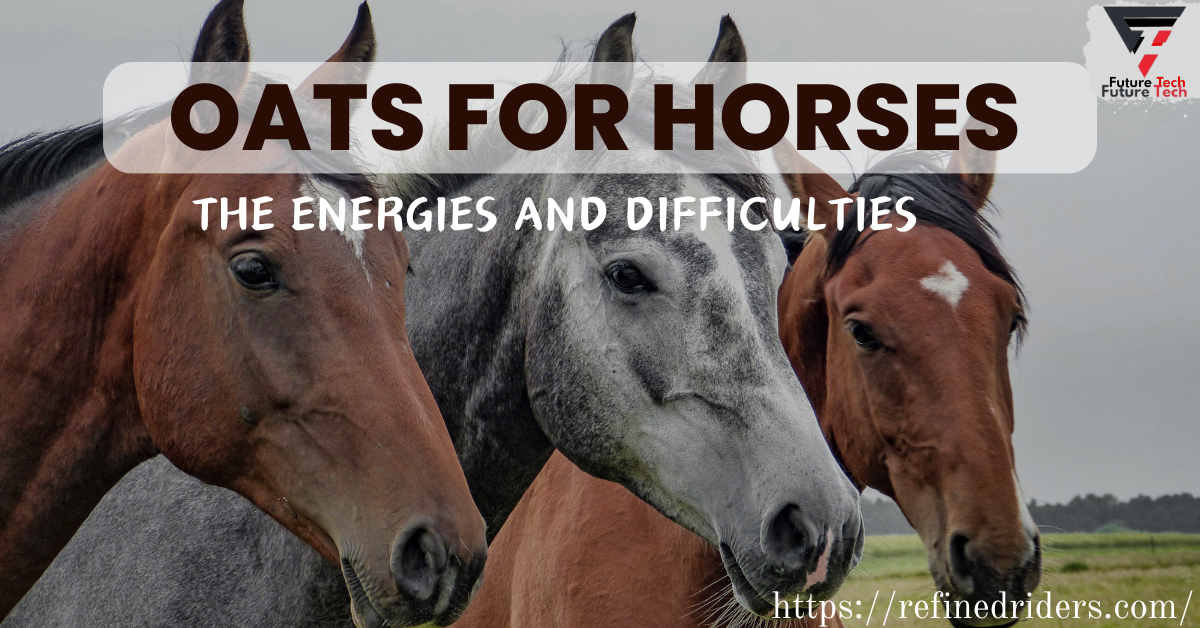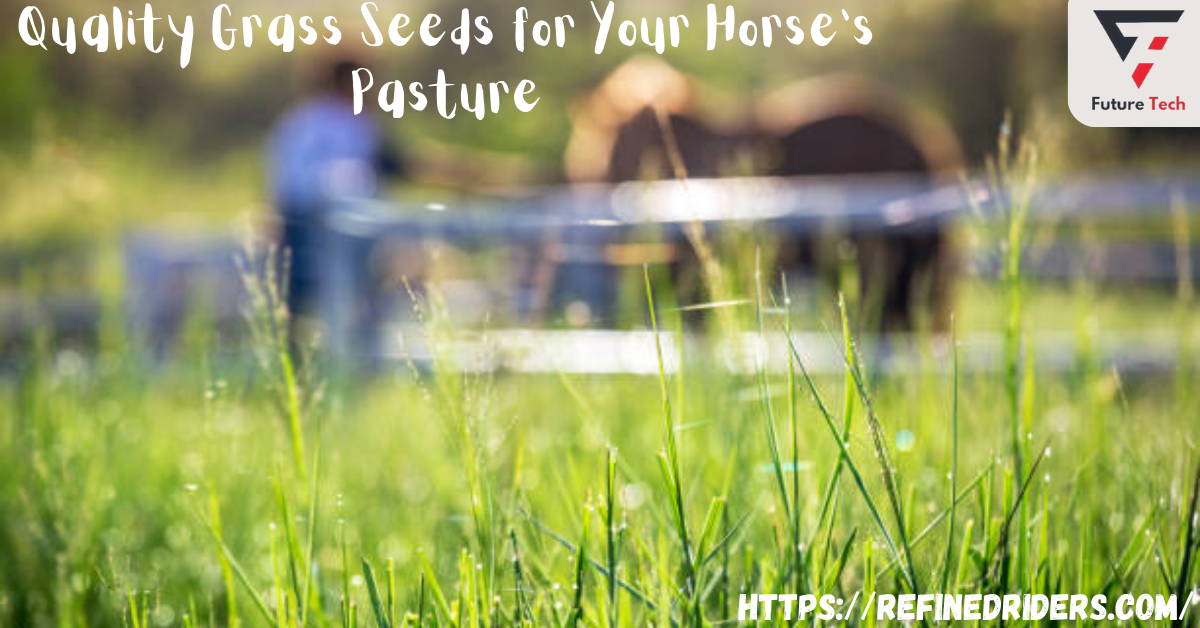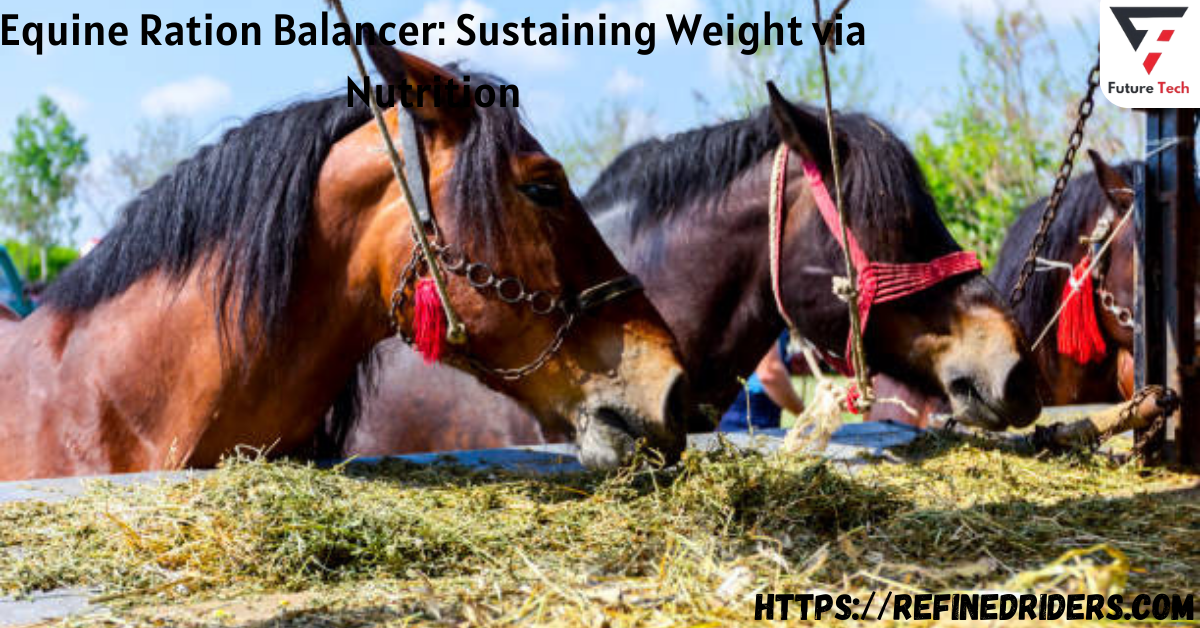High-fat horse feed has revolutionized how we feed and maintain our horses’ well-being, becoming a crucial component of equine nutrition. High-fat feeds are a specific dietary choice that aims to give a concentrated amount of energy via increased fat content while still providing essential nutrients. These diets usually include high-oleic-acid components that support coat health and general vibrancy.
For performance horses and horses with more significant energy needs, the increased fat content permits a regulated release of energy. High-fat horse feed seems specially formulated to fulfill the specific nutritional demands of horses involved in strenuous activities. It carefully balances fats, proteins, and other essential components. This introduction explores the importance of high-fat meals and clarifies how they support horses’ best health and performance across various sports.
The Evolution of Equine Nutrition: The Need for Higher Fat
Horse diets often consist of grass and grains such as barley and oats. But more and more veterinarians and equestrian nutritionists are realizing how important it is for horse feed to have a more excellent fat content. Concentrated energy from higher fat diets may help horses’ health and performance, from weight increase to better coat condition.
The Science of Fats: Fatty Acid Composition
Horse nutrition requires fats, especially fatty acids like Omega-3 and Omega-6, for energy production, the formation of cell membranes, and the absorption of fat-soluble vitamins. According to equine studies from organizations like Kentucky Equine Studies, a healthy mix of these fatty acids may help improve a horse’s health and performance.
Advantages
Horses on a high-fat diet can run longer without fatigue, sustain fewer injuries, and maintain body weight while consuming less grain and more forage. A horse’s diet may safely acquire weight by including fat while lowering the risk of colic or fat. It may speed up the breeding cycle for nursing mares. The breakdown of fat produces less heat inside the body than in diets heavy in carbohydrates or protein. Perhaps most crucially, high-fat diets allow horses to satisfy their high-energy needs more effectively and safely in high-performance circumstances, such as when pregnant, nursing, or performing moderately intensive levels. Regrettably, the horse can only eat so much grain overall due to its short digestive system.
Horses that need a high energy intake must thus become given a concentrate mix rich in energy. In the past, it succeeded by increasing the concentrate (high-energy) percentage of the diet and decreasing the amount of forage consumed. Compared to the grains in concentrate mixtures, forages like hay and pasture are lower in calories and more fibrous. Fifty percent of a horse’s daily diet should come from pasture under optimal management. During periods of high production, horses who are “hard keepers” and have minimal body fat stores usually need to consume more than 50% of their daily diet in concentrates to maintain their body weight. Regrettably, the pH and activity of the digestive microorganisms in the horse’s large intestine and cecum remain adversely impacted when high-starch concentrates surpass 50% of the overall diet and replace fodder. The overall result is a rise in the prevalence of colic and founder.
How to Add High-Fat Horse Meal to Equine Diets in Supplementation
Rice Bran
A common high-fat horse feed that is low in carbohydrates and high in fat and fiber is rice bran. It’s a great source of gamma-oryzanol, which promotes muscle growth and has antioxidant qualities. Research indicates feeding horses rice bran might enhance their coat quality and boost their endurance. It is a tremendous high-calorie solution for hard-working horses that need to add fat to their diet but cannot handle high-starch meals. Due to its high nutritional content, rice bran—a byproduct of milling rice—is becoming a more and more common ingredient in horse diets with high-fat content. It gives horses a substantial supply of calories and usually has around 20% fat, 11% protein, and considerable fiber.
Gamma-oryzanol, an antioxidant that supports muscle growth and repair in horses, is one of the unique components of rice bran. Because of this, rice bran is an excellent option for both performance horses and horses that need extra help gaining weight. Rice bran is appealing from the perspective of horse nutrition as it provides a high-calorie content without the starches present in grains, lowering the possibility of ailments like colic or laminitis. Because its fat content may increase stamina and shorten recovery times, it is especially advantageous for endurance sports. Additionally, rice bran may improve the health of the skin and coat while giving the impression of being smooth and shiny. But when feeding rice bran, it’s crucial to maintain a balanced calcium-to-phosphorus ratio. Because it naturally has a higher phosphorus content than calcium. Eating a lot of it might cause an imbalance in the body.
Flax
Another high-fat feed choice for horses is flax. Flax, high in Omega-3 fatty acids, promotes joint health and a healthy immune system. You can feed it whole, ground, or as an oil, giving you more options for including it in your horse’s diet. Produced from the flax plant, Linum usitatissimum, flaxseeds provide another option for high-fat horse feed. They include many Omega-3 fatty acids, which are vital for immune system performance, joint health, and cellular integrity. They also have anti-inflammatory qualities. Research indicates that Omega-3 fatty acids in flax may help horses suffering from inflammatory diseases and enhance their coat quality.
There are three ways to feed flax: whole, ground, or as flax oil. Consuming whole seeds should be mindful of their potential for undigested digestion, which can diminish their nutritional value. Therefore, it’s standard advice to use flaxseed oil or ground flaxseed for improved nutritional absorption. Horse owners should be aware of the potential lethal cyanide generated when soaking whole, raw flaxseeds water for extended periods. But the danger is negligible if you grind the flax and feed it immediately or turn it into oil.
Alfalfa Pellets: The Forage Alternative
Although alfalfa pellets are more well-known for having high protein and fiber content, they also have a respectable fat level. They provide a balanced nutritional profile with critical amino acids, vitamins, and minerals, making them particularly advantageous for performance horses, older horses, and mares. Alfalfa pellets consist of compressed alfalfa, a feed rich in fiber, protein, and fat. They provide a comprehensive dietary profile that includes calcium, vitamins like A, and essential amino acids. Alfalfa pellets can be beneficial for seniors struggling with chewing feed and performance horses requiring increased energy intake. High nutritional content of these products is highly beneficial for mares, especially those lactating or in the gestational period.
Although the primary advantages of alfalfa pellets are protein and fiber, it is equally important to consider their fat content. Condensed energy sources like fat are beneficial for acquiring or maintaining weight. Alfalfa pellets provide an alternate energy source for horses who need a reduced carbohydrate diet without spiking their blood sugar. Alfalfa pellets, being high in calcium and protein, are crucial for pet nutrition monitoring due to their high content. A surplus of calcium may impede the absorption of other essential minerals, such as magnesium and zinc, while excess protein can cause stress on the kidneys. Alfalfa pellets should be incorporated into a balanced diet, preferably with the guidance of a veterinarian or an equine nutritionist.
Oils & Supplements with Fat
In addition to high-fat diets, (High-fat horse feed )you may give your horse more fat in supplements like oils. It is advisable to introduce them gradually to provide the digestive system time to adjust. While they are often much more costly than flax, alfalfa, or rice bran, they might be a handy substitute.
Oils have become utilized to augment the fat content of horse meals as they provide a concentrated energy source for equine diets. Oils may be a low-volume, high-calorie supplement to a horse’s diet, having more than double the caloric density of proteins or carbs. Fatty acids comprise most oils, particularly omega-3 and omega-6 fatty acids. These fatty acids are necessary for many physiological processes, including inflammation regulation, cell membranes’ integrity, and immunological response.
Rich acid profiles vary throughout various kinds of oils. For instance, maize oil has a greater omega-6 concentration than flaxseed oil, which is vital in omega-3s. Including fat in a horse’s feed may improve endurance and speed up recovery after a workout. Oils offer a more consistent energy source due to their slower metabolism, making them beneficial for endurance activities. The increased fat in the diet also protects the muscles and liver’s glycogen stores, postponing tiredness.
Optimizing Equine Coat Health with Oils:
A diet rich in oils may also enhance the condition of the horse’s coat, giving it a shiny, healthy look. To allow the digestive system to adjust, it’s crucial to add oils to a horse’s diet gradually. Digestion problems like diarrhea might result from consuming too much oil too soon. Furthermore, not all oils originate equal. Certain oils, like fish oil, offer particular advantages, such as greater concentrations of EPA and DHA, which have anti-inflammatory qualities. On the other hand, oils such as safflower or sunflower oil contain more omega-6 fatty acids, which are present in most horse diets already and might worsen inflammation if given in excess.
Forage vs. High-Fat Diet
In any horse diet, forage needs to be the predominant ingredient. Finding the ideal ratio between forage and high-fat meals or supplements is crucial, and it might change depending on the horse’s age, degree of exercise, and general health.
Conclusion:
High-fat horse feed is a novel method for feeding horses, catering to their unique energy needs for various activities. This essential ingredient ensures a balanced intake of essential nutrients and provides concentrated energy through an enhanced fat content. The development of horse nutrition emphasizes the need for higher fat diets, which may lead to advantages like better coat condition and increased performance. This thorough manual stresses the need for careful balance in horse diets, covering everything from the science of fatty acids to the benefits of adding oils, rice bran, flax, and alfalfa pellets. Maintaining ideal health and performance for our equine friends requires balancing high-fat ingredients and fodder.




